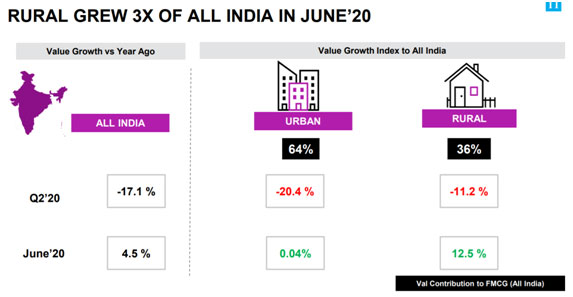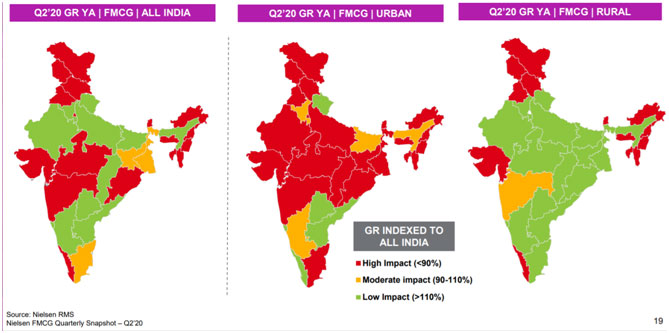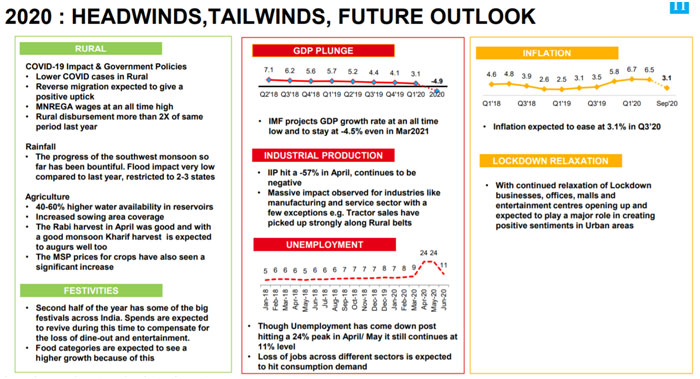As per Nielsen Q2 2020 FMCG growth for the FMCG sector, rural areas grew three times of the all India numbers in June. While the All India number was at 4.5%, rural India grew at 12.5%. For quarter 2, April-June, growth was in negative at 17.1% for the national average while rural fell much less at 11.2% while the decline was more in urban areas at 20.4%.

According to Nielsen, lower COVID incidence, government stimulus and agricultural impetus have boosted rural sentiments. Some of the measures include Rs 40,000 crore increase in allocation of MGNREGA, 116 districts of UP, Jharkhand, Odisha, MP, Rajasthan & Jharkhand, included in the ‘Garib Kalyan Rojgar Abhiyan’ – to ensure opportunities to the migrant-laborers as per their skill set, upskilling of three lakh migrant workers with short-term programmes and Rs 1 lakh crore agri infrastructure Fund for farm gate infrastructure for farmers.
STRONG RURAL GROWTHS ACROSS LED BY REVERSE MIGRATION HOTSPOTS

For the urban areas, with continued relaxation of lockdown businesses, offices, malls and entertainment centres opening up and expected to play a major role in creating positive sentiments in urban areas.On the future outlook, second half of the year has some of the big festivals across India. Spends are expected to revive during this time to compensate for the loss of dine-out and entertainment. Food categories are expected to see a higher growth because of this.
While in rural sectors, there are lower COVID cases in rural areas and reverse migration expected to give a positive uptick. In addition, MNREGA wages are at an all-time high, rural disbursement is more than two times of same period last year, the progress of the southwest monsoon so far has been bountiful and flood impact very low compared to last year, restricted to 2-3 states. There is a positive boost for agriculture with 40-60 percent higher water availability in reservoirs, increased sowing area coverage. The Rabi harvest in April was good and with a good monsoon Kharif harvest is expected to augurs well too and to the MSP prices for crops have also seen a significant increase.


















